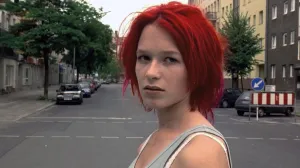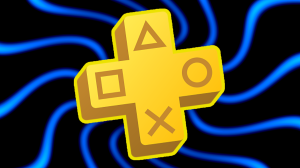Advances in visual effects technology have fundamentally changed the world of media, as the lines between movies and TV series have blurred to the point that serialized storytelling on the small screen can accomplish conveying things that even substantial Hollywood productions fail to accomplish. Over the past decade, one series that has pushed boundaries in what it could accomplish in the TV realm is Game of Thrones, as each season since its 2011 debut has amplified the scale and scope of the fantasy world created by author George R.R. Martin. The final season of the series delivered the most staggering sequences to date, made possible thanks to Weta Digital.
Videos by ComicBook.com
This past season depicted all manner of mayhem, ranging from massive battles shrouded in the darkness of night, illuminated mostly by the flames created by dragons, to the complete destruction of King’s Landing at the hands of a Queen with a score to settle. Whether it be conveying hordes of undead soldiers laying waste to warriors on horseback or the chaos of a city’s razing, Weta Digital Visual Effects Supervisor Martin Hill was a key figure in making the series a reality.
ComicBook.com recently caught up with Hill to discuss the scope of his work on the series, the challenges of the undertaking, and finding the balance between fantasy and reality.

ComicBook.com: From films like Batman Begins to 30 Days of Night to Avatar to Game of Thrones, you have a large number of impressive and slightly different credits to your name. For someone who might not know what a “Visual Effects Supervisor” is, what do your daily duties entail?
Martin Hill: It really depends on what stage you are in on a project. So there’s always pre-production, where you’re planning the shoot with the on set team, with the clients, with the director. Where you’re working out what’s going to be visual effects, what’s the process we’re going to use for each of those effects, what we need to pre-visualize, which is essentially an animation stage before we get into filming. And sometimes that can be done with video, sometimes it can be done with storyboards, sometimes it’s just really basic pre-vis, where we call it chess-piecing characters around to know where they’re going to sit in the stage. And that can advance through some pretty advanced computer graphics.
Now, in the last few years, we’re using virtual cameras onstage, and virtual sets. So that involves pre-building CG environments and having assets that can be controlled by motion control actors on the stage. So there’s a whole range of things to do there as well as the building aspects as well. And there’s the shoot process, so then you start filming. So on set, it’s a very different day. There, you’re working with the on set team.
The visual effects team is doing things like making sure we have 3D scans, or surveys of the sets or environments that we’re in, making sure that we can track the cameras correctly, that involves putting tracking markers up, and making sure we record and get all the metadata from the cameras that are shooting, making sure we got blue screens, or green screens in the right places when we need them, working out what kind of blue or green screen that we need, how much light we need on it to work best for the shot, so you don’t get too much light contamination from the screens.
And then it’s also a case of just working with all the other on set teams, like the grips, and the set builders, and the painters, and the Director of Photography, and the director of course, just making sure that everything’s going to tie into what we’re going to do in post-production, which is the next stage.
What generally happens is you get a rough edit, plates get sent over, plates get converted into something that we can work off from the camera. We ingest them into a facility like Weta Digital, and then we start going through the process of camera tracking them and starting to add the visual effects.
There, it’s all about reviewing generally in a theater, everyone’s work, whether it’s models, or textures, or environments, or animation, or final composites, and pushing things along in a very iterative way. So you start off with creating the models, and then you’re placing them in the scene. And then you’re reviewing with the director, and going, “Yeah, this is what we want for the environment here.” You put the characters in, the animation, getting the performance that the director wants, and right through to the final photo real, if it’s that kind of feature, composite.
And throughout that process, we’re always sending them back to the client for their reviews as well. And then hopefully, you get finals on the shots, and then they’re in the movie.
On Game of Thrones, I only did the post portion. I wasn’t on set or involved in pre-production.
Some audiences prefer the look of practical effects over CGI, creating a stigma around the overuse of digital effects. However, given the scale of Game of Thrones, is it even possible a series like this could have ever been pulled off by relying primarily on practical effects?
When I was growing up, I loved special effects in film. I loved [Ray] Harryhausen, and I watched James Bond films and those sort of things. There was always the ability to create with the technology available at the time, images that you want. It’s really a matter of, is the fidelity going to be there so the audience buys it, and you’re going to have the audience not be taking out of the story of the film. So if you look at, I don’t know, Harryhausen’s skeletons back in the early ’80s and late ’70s and that even before, there’s certainly a degree of un-realism about them. But they’re done in such a creative and imaginative way and that uses the technology that’s available to the best it could be.
So, yes, you can create things, it’s whether the audience is going to buy it. Now, you fast forward to five, 10 years ago, you’re suddenly in the realm where it becomes much easier to create vast effects. I think Lord of the Rings really opened everyone’s eyes to just how epic you could make some shots with CG. And of course, there were a flood of films and productions that used similar techniques to varying successes. But it’s really just about taking the tool you have and being able to make the audience buy it, and not try and overstretch and come up with something that doesn’t quite feel real and doesn’t complement the story.
The thing that I think is interesting at the moment is I think in the last three or four years, we’ve just crossed a line where all the effects from film are flooding into television, like Game of Thrones. And what’s really interesting is, certainly here at Weta Digital, now we treat television in exactly the same way we do film. Largely, they’re shot on the same cameras. Game of Thrones is shot on the ALEXA SXTs, and so were my last couple of features. So you’re essentially working with the same toolkit. So if the budget’s there, and the imagination’s there, then there’s no real limitation in TV anymore. Yeah, you’re only really limited by what you think you can create to really help the story rather than just creating things just for the sake of it.

A prevailing idea among many visual effects artists is that the shots they’re most proud of are the shots that audiences don’t even realize are CGI. Would you agree with that idea, or are you just as proud as bringing something fantastical to life like a dragon flying through the sky, as it allows for more creative liberty than something like extending the size of a castle?
There’s a really wide range there. I mean, I think what’s really interesting about, as you mentioned earlier, any kind of backlash against CG is I don’t think audience generally have any awareness of just how much what they’re looking at is synthetic, is created on computers, an awful lot of set extensions. You watch something like, I don’t know, The Crown or something, and there’s just all those interiors, or lots of those interiors, are just generated in post-production. And yeah, there’s certainly something really, really satisfying about just creating something that just looks spot on, and you know you can put it out there and audience just go, “Oh, yeah, that’s amazing. They found a really nice location there for that.” It’s obviously a really big part of the job.
Sometimes that can actually be pretty disappointing as well. I worked on Furious 7, and we created the digital Paul Walker for example. And the whole remit was to make sure that in the 300 or so shots that we made of Paul Walker was no one could tell. And by and large, people couldn’t. We’d put this enormous amount of work and to a certain extent no one noticed. But that’s essentially the job, and I’m really proud of all the work that went in that. But the flip side of that, there’s also effects that you still hope are seamless are essentially visible to the audience, but they know they must be visual effects because you can’t a dragon flying through the air, or you can’t have these fantastical landscapes, don’t correlate to any place where we could film.
And of course, films are full of those. And I think what you have to do as a visual effects artist, is really pay a lot of honest attention to those shots and try to imbibe them with the same kind of reality that you do for the invisible shots. Even though subconsciously everyone knows that they can’t be real, you want to make sure that you’ve got the weight and substance of the dragon, that it feels like it’s in the air and it’s lit with realistic lighting and just all the physics plays correctly.
The other side of that is when you’re doing more fantastical stuff, you can have just a lot of fun with them. You can just create things that don’t exist and really try to make something that the audience hasn’t seen before and really give things a wow factor. Something like Rhaegal’s death scene was a really good example of that. Rhaegal’s just been mauled in episode three, and his wings are all torn, and the membranes on his wings are all abraded and you can see through them.
So there’s a number of things that we did in episode four, where we went back and repainted his textures to create these holes and these tears. When he holds his wing up to … the sun’s behind his wing, you can see where the wing’s thinner, because it’s been scraped in the fight before. And we want to give him this really playful performance, because he’s flying over Dragonstone, and they’re through the battle, everything’s really happy. And we get to put in this just immense shock moment of him then just getting shot from out of nowhere. So he flies past this cliff, and gets basically into the line with Euron’s fleet, and gets impacted by these arrows.
At that point, we can go, “Well, we’re in full storytelling mode.” We needed to make it a really big point of difference from Season Seven, where Drogon gets hit but doesn’t die, so having a third arrow just slam through his neck. We needed to make sure it was really clear that it was a killing blow. So one of the things we did there was change the camera move to what was actually quite a fantastical camera move and less … a more impractical one to shoot. And you got to be really careful with things like that, because if you do it too often, then it can take the audience out of the picture, because you’re doing lots of unrealistic camera moves. But we did this orbit around, so we flew past his head, and we could put his last breath if you like, his dying breath, in. At that point, he sprays all this blood out towards the camera. And then the camera carries on and ends essentially at Daenerys’ point of view as we see his wings fold up and he crashes into the ocean.
So with all the fantastical stuff, you can really get in and be creative and tell the story with it, and that’s really satisfying when that works.

Was there a particular moment of sequence that you’re particularly proud to have pulled off with this final season?
Wow, there were so many we did, so much work across the show. There’s quite a lot of moments I could pick out. I mean, Rhaegal’s death is a big one. I think maybe the Dothraki charge is a big one for me, just the beginning of episode three when I felt like Miguel Sapochnik, the director, handled the balance of that episode so well. Being able to sustain that fight for that long a time and just the way the ebb and the flow of the battle happened. And there’s a point when the Dothraki are charging and their swords light up, where you really kind of, “Oh, wow, they’re going to come out on top.” And then the scales change as soon as they charge and just get decimated.
It’s a really quiet shot, but when you’re looking from Gray Worm and Brienne, Jaime’s point of view at the Dothraki just in the distance. And at this point they’re just little pinpricks of light. And the lights are just going out one by one, and that was very intentional. You really only wanted to see the tiny spots of their swords go out. That was quite a horrifying moment even when I watched it. Even though I knew what was happening in that scene for a year and a half before watching it finally out there, it still sent the shivers.
When we’re doing that kind of work, we knew it was a really big moment for the show. So even though you’re only seeing those flames of light, when we were animating those, they’re actually connected to riders that were connected to horses and there’s Wights in amongst them, just so we got all the cadence and motion of the battle working. So we did actually use crowd simulations for those.
With the number of battles the show had seen at that point, that episode was incredibly unnerving in the ways it felt more like a horror movie than a typical fantasy series.
It was very much Miguel genre mashing and bringing in elements of horror films. The enemy you can’t see is more terrifying than the enemy you can, is a clear motif.

Lastly, can you talk about the collaboration process on visual effects projects? Do your duties often require you to bring to life exactly what the director is asking or do you get to offer your unique perspectives about what could make for the most effective sequence?
It varies show to show what the various relationships are. Really, it all comes down to planning. There was a very clear pre-vis that was done, not by us, for episode three, which essentially mapped out the whole episode, and it doesn’t vary that much from there. So where we do have the ability to change things, we can absolutely suggest things. So on Game of Thrones, the method for that was we would review things with a client-side visual effects supervisor, who would then review stuff with [creators D.B. Weiss] and David [Benioff] and come back to us. And it would always be a discussion. So for one sequence, Stefen Fangmeier suggested changing the camera move and combining some shots. Dave Clayson, our animation supervisor, showed a few options that he thought they were looking really cool. And Dan and David liked one of them, and that’s what we then made the shot with. And Dan and David came back and said, “That’s one of our favorite shots.”
It’s really nice to be able to have that kind of input, but it’s really in the millions of decisions that go into every shot, how shiny is the armor of the digital characters, how fast are they wielding their swords. There’s all these nuances, where you’ve got so much creative input, and you need to be really careful with all of those. And then there’s hundreds and hundreds of decisions that need to be made that do help things creatively. I mean, there’s things we can suggest that … I don’t know, “When Drogon lands on Winterfell, let’s crumble off one of the turrets to make it a bit more of a dramatic shot.” When Viserion is in the courtyard with Jon, it’s like, “When he lands, let’s collapse the tower, and let’s have fire leaking out of all his old wounds, to show he’s a bit diminished at that stage.”
These are things that all come up in discussion because you’ve got hundreds of creative artists at Weta Digital and the other vendors, as well as D and D and their vision, and the VFX supervisors. So you want it to be a collaboration and if someone’s got a real good idea, we always present it and just go, “Hey, what do you think about this?” And see whether they want to run with it.
*****
All eight seasons of Game of Thrones are available now on Digital HD. You can learn more about Weta Digital at their official website.








